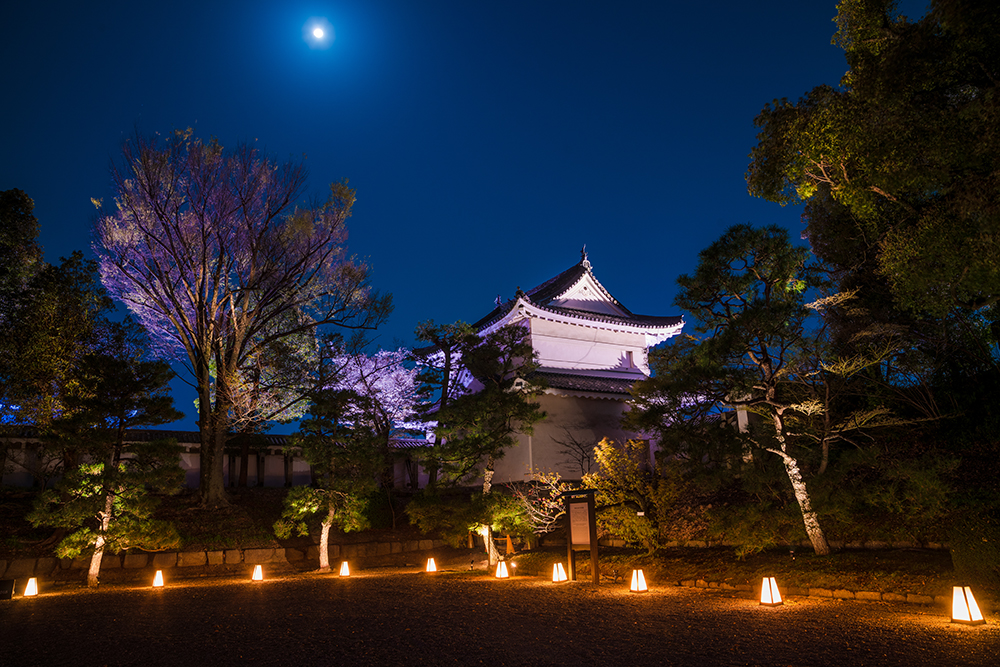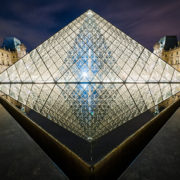Nijo Castle Review & Tips
Nijo Castle (二条城, Nijōjō) is a UNESCO World Heritage Site in Kyoto, Japan that is the former residence of Shogun Tokugawa Ieyasu. We’ll review the prestigious Japanese castle in this post and share some of our tips for visiting.
While the construction of this site began in 1601, when the Shogunate ordered all the feudal lords in Western Japan to contribute to the construction of Nijo Castle, its initial construction was not completed until the reign of Tokugawa Iemitsu in 1626. Following that, the castle has been expanded, parts have been destroyed by fire, rebuilt, etc.
Nijo Castle consists of three areas: the Honmaru (main circle of defense), the Ninomaru (secondary circle of defense), and gardens that encircle the circles of defense. Nijo Castle’s grounds are then surrounded by stone walls and moats.
In our Himeji Castle Review and Osaka Castle Review posts, I suggested that all three castles were complementary experiences to one another, rather than substitutes.
To this point, Nijo Castle is significantly different than other castles you’ll find throughout Japan, including those of Himeji and Osaka. Unlike other castles, this one does not exactly scream “castle.”
The primary purpose of Nijo Castle was not fortification or defense. It is fortified, but the castle walls and defensive elements are far less imposing than what you’ll find at other castles. It was intended to be an imperial residence, and an understated one at that.
There’s almost no grandiosity to Nijo Castle, and if you were to show it to a casual tourist without presenting it as a castle, I doubt most would identify it as such. (To be honest, I probably wouldn’t.)
Nijo Castle’s claim to fame is its architecture. The palace buildings are exquisite examples of Azuchi-Momoyama Period architecture, marrying the castle and imperial palace styles.
The main buildings of Nijo Castle, known as Ninomaru Palace, are constructed of Japanese cypress. They feature intricate transom woodcarvings, paintings by the Kano School on fusuma panels, byōbu folding screens, and features flourishes that suggest a Chinese influence.
While all of this might sound like a lot on paper, in person, it’s quite understated. Subtlety plays a significant part of the Nijo Castle experience, and those with a keen eye might spot these details, but most visitors are likely to miss them.
The castle has 33 rooms you can tour on your own, but the vast majority are unfurnished–as they were when the castle was functional.
These unfurnished interiors will be familiar to anyone who has visited Himeji Castle, but in the case of Nijo, there’s not nearly the same grandeur to the exterior experience. To Nijo’s credit, there’s a level of deserved detail and nuance that can be spotted here, but it’s easy to miss.
That’s not meant to sound condescending. The only reason I “know” many of these details is because of the audio guide (available for rental) at Nijo Castle, and thanks to online research. If you’re going to visit Nijo Castle, I’d recommend paying to rent that guide. Without it, I feel it would’ve been a far less satisfying experience for me.
The guide imparts some fascinating history about Nijo Castle, such as information about the “nightingale floors,” which were built to be intentionally creaky to warn of intruders. (It seems the Shogun was quite paranoid.) There is also information presented about social hierarchy at the palace that enhances the experience.
A lot of interesting material, but perhaps nothing a good book or bit of online research wouldn’t cover. Even with the guide, Nijo Castle isn’t one of my top places to visit in Kyoto.
The good news, though, is that Nijo Castle is very close to Kyoto Imperial Palace. So, it’s not as if you’re walking tremendously far out of your way to get here.
My recommendation would be to do the (free) Kyoto Imperial Palace first and then continue on to Nijo Castle if you find yourself wanting to see inside the type of buildings on the grounds at Kyoto Imperial Palace, which cannot be entered there.
Outside of Nijo Castle is an extensive garden, designed by Kobori Enshu. These renowned gardens are an attraction in their own right, and are one of the highlights of the experience.
Although we did not visit during cherry blossom season, I’d imagine Nijo Castle is gorgeous then. It should likewise be beautiful during fall colors season.
As an update, we have since done Nijo Castle for its nighttime illuminations during both sakura and fall colors seasons. It’s lovely, but still difficult to recommend.
The biggest obstacles to endorsing Nijo Castle are its out of the way location as compared to other nighttime illuminations (you’ll be choosing from around a dozen, and many of the others are convenient walks from one another in the Higashiyama district) and popularity. The word “castle” has tremendous drawing power.
Overall, while I do consider Nijo Castle a potential ‘companion’ experience to Himeji or Osaka Castles, this is not to say it’s a must-do. To the contrary, if your time in Kyoto is limited to 1 or 2 days, I’d almost certainly recommend skipping Nijo Castle. There’s a certain allure and cachet to the concept of a “castle,” but this is completely unlike the ostentatious and elaborate buildings you’d find in Europe, and also far less impressive than other castles in Japan.
Perhaps I’m undervaluing its subtle elegance, but I think there are alternatives in Kyoto that will expose you to a substantially-similar architectural experience while also bringing more to the table outside of the architecture. Nijo Castle is fine, and something to consider on a longer itinerary, but it’s not a huge loss if you end up skipping it.
If you’re planning a trip to Japan that includes Kyoto, we recommend that you start by consulting our Ultimate Guide to Kyoto, Japan to plan all aspects of our vacation. You should also check out our other posts about Japan for ideas on other places to visit!
Your Thoughts
Have you visited Nijo Castle? If you’ve also visited Himeji Castle or Osaka Castle, how do you feel it compared to those? Do you agree with my assessment, or would you recommend doing Nijo Castle? Have you visited Nijo Castle during cherry blossom season? What about any other seasons? Any thoughts or tips of your own to add? Share any other questions or thoughts you have in the comments!




















I really enjoyed Nijo castle. I got a lot more out of it than Osaka Castle-but then, Osaka Castle was not really anything like I expected it to be, pretty facade aside. I think that if someone was visiting Kyoto and not any of the other areas with castles that it is worth a stop, if only because the Japanese concept of a castle is nothing like the castles of Europe.
In large part, I think Osaka Castle is about expectations. If you realize it’s modernized and sort of museumified, then it can be more enjoyable (if that’s what you’re after), but if you go in expecting it to be preserved, then it’s disappointing.
Definitely much different than European castles. Personally, I prefer the European style, but there’s a certain beauty to Nijo Castle, too.
Nijo Castle was very beautiful with the cherry blossoms in bloom, even through the pouring rain.
I wish I would have had the audio tour but might have been electrocuted outside of the palace… It’s funny that the audio guide told you the floors were to warn of intruders; when I visited last month there was a sign saying it was just a by-product of how they were built. Now I’m really curious to what the truth is!
Well, it was also a byproduct of how it was built. So, I guess both are true? 😉